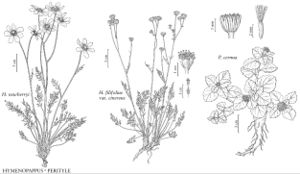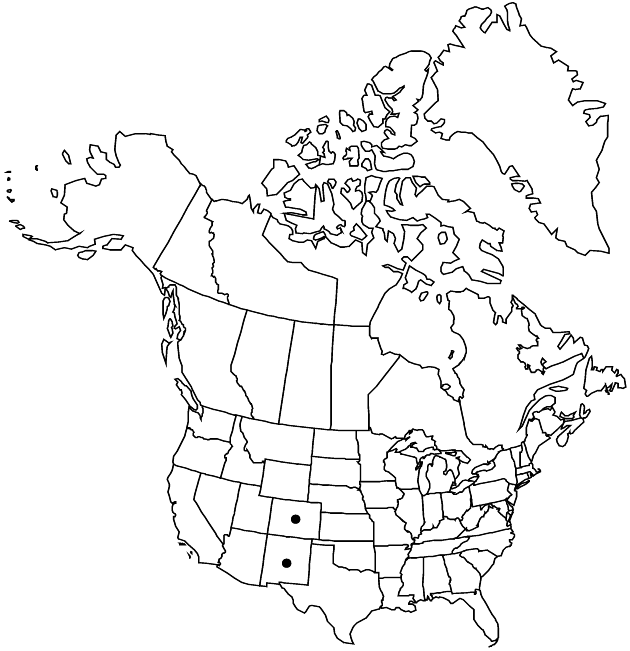Difference between revisions of "Hymenopappus newberryi"
Contr. Gray Herb. 68: 96. 1923.
IllustratedEndemic
Basionym: Leucampyx newberryi A. Gray ex Porter and J. M. Coulter Syn. Fl. Colorado, 77. 1874
FNA>Volume Importer |
imported>Volume Importer |
||
| (2 intermediate revisions by 2 users not shown) | |||
| Line 6: | Line 6: | ||
|place=68: 96. 1923 | |place=68: 96. 1923 | ||
|year=1923 | |year=1923 | ||
| + | }} | ||
| + | |special_status={{Treatment/ID/Special_status | ||
| + | |code=F | ||
| + | |label=Illustrated | ||
| + | }}{{Treatment/ID/Special_status | ||
| + | |code=E | ||
| + | |label=Endemic | ||
}} | }} | ||
|basionyms={{Treatment/ID/Basionym | |basionyms={{Treatment/ID/Basionym | ||
| Line 50: | Line 57: | ||
|publication title=Contr. Gray Herb. | |publication title=Contr. Gray Herb. | ||
|publication year=1923 | |publication year=1923 | ||
| − | |special status= | + | |special status=Illustrated;Endemic |
| − | |source xml=https:// | + | |source xml=https://bitbucket.org/aafc-mbb/fna-data-curation/src/2e0870ddd59836b60bcf96646a41e87ea5a5943a/coarse_grained_fna_xml/V19-20-21/V21_754.xml |
|tribe=Asteraceae tribe Heliantheae | |tribe=Asteraceae tribe Heliantheae | ||
|subtribe=Asteraceae (tribe Heliantheae) subtribe Hymenopappinae | |subtribe=Asteraceae (tribe Heliantheae) subtribe Hymenopappinae | ||
Latest revision as of 20:14, 5 November 2020
Perennials, 20–60 cm. Leaves: basal 2-pinnate, 12–25 cm, lobes 5–15(–25+) × 0.5–1.5(–3+) mm; cauline 1–3(–5). Heads 3–8 per stem. Peduncles 6–15 cm. Phyllaries whitish or yellowish, 8–10 × 4–7 mm. Ray florets 8; corollas white or pinkish, laminae 14–20 mm. Disc florets 60–150+; corollas yellowish, 3.5–4 mm, tubes 1.5–2 mm, throats campanulate, 1.5–2 mm, lengths 2–3 times lobes. Cypselae 3.5–4 mm, glabrous; pappi 0 or of 1–12+ scales 0.01–0.1 mm. 2n = 34.
Phenology: Flowering Jun–Sep.
Habitat: Clays or igneous soils, openings in aspen, pine, and spruce woodlands
Elevation: 2100–3000 m
Discussion
Selected References
None.
Lower Taxa
None.

